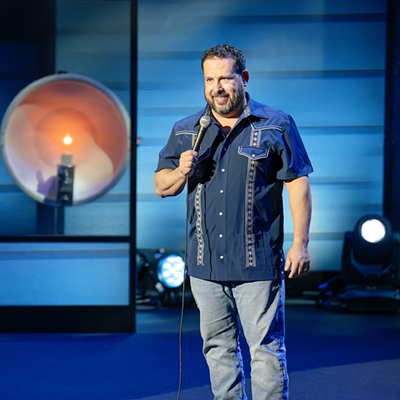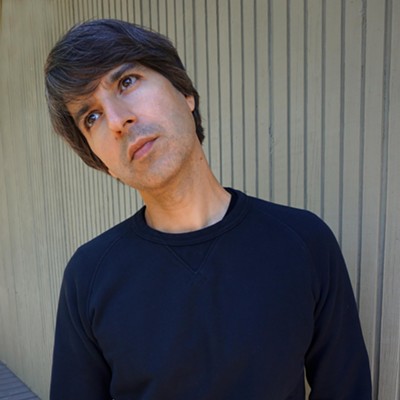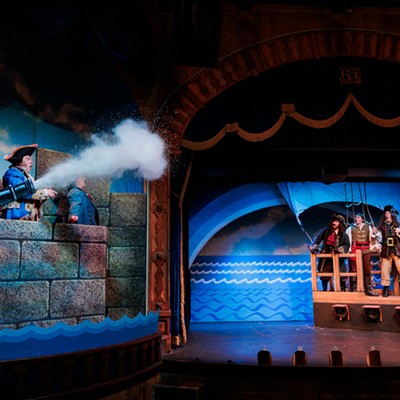Ever had something that you no longer needed—but you thought it was too cool to just throw away? Well, you're not alone.
Artist Ned Schaper makes sculptures entirely out of things that people drop off at his door, and whatever other objects he can find.
Schaper, a kinetic-sculpture artist, is the creator of the Mat Bevel Institute. He opened the institute in 1992 as a center for the visionary arts, with a goal to help unite the community through art. He now uses the institute as a production studio and a home for his sculptures.
Schaper started collecting junk while living in Manhattan. "It was a very dangerous neighborhood, but no one ever messed with me. I would always be carrying something strange," he says.
Schaper's sculptures come in all shapes and sizes, but all are working machines. Favorite items include bike wheels, swing-set parts, springs and coat hangers; he waits to make art until he gets pieces that fit together on their own.
Schaper has used his "found objects" to create everything from a bull—made out of an old silent movie projector—to larger statement pieces. One of his sculptures, "The Ironic Lung," features a man sucking a plastic tube connected to an inflatable Earth inside his chest.
Another popular item used in his sculptures? Trophies. Schaper says he uses a lot of them, because they're too grand for the trash.
"I feel it is a spiritual thing. The unwanted objects find their way to my doorstep, and I give them a new life in theater," says Schaper.
Another frequent item used in Schaper's sculptures is lighting. The light bulbs used in Schaper's sculptures come in a variety of shapes, sizes and colors, and they aren't just for show—they work. Some lights flash; some dance; others glow.
"When you come at night, it's very colorful, very dramatic," he says.
Schaper is one of the featured artists in the upcoming Tucson Sculpture Festival, beginning Saturday, Feb. 6. The festival features 29 artists and all different types of sculpture—from pottery to blown glass and even 3-D multimedia sculptures. The opening celebrations will include activities, performances, refreshments and a chance to meet sculptors in their studios.
"The opening celebration should be very interesting. It looks kind of like a kinetic sculpture nightclub in there," says Schaper.
Schaper is also a performer: He wears and interacts with his sculptures as he plays different characters. Schaper will be performing at the Tucson Sculpture Festival. His family-friendly performance, during which he'll talk about many different topics relating to art, takes place during the opening celebration, Saturday, Feb. 6, at the Mat Bevel Institute.
"Much of my philosophy has to do with our relationship to objects and the creation of things," says Schaper. "To most people, that is a topic of art."
One important part of his philosophy is that art shouldn't have to suffer when the economy takes a dive. He thinks art-creation shouldn't have to rely on funding.
"'Available Resource Technology' is my term to describe the process I use to make art. I see what I have, and see what wants to fit together," he explains. "We learn that creation is something that is already happening in the world. We only need to be aware of it, allow it and encourage it."
Festival-goers will also get the chance to see, hear and play the Anarchestra sculptures—working instruments made from steel pieces that have been welded together. The instruments are in all shapes and sizes, and range from wind instruments to drums to pianos.
There will be two chances to play the sculpture instruments: during the opening celebration, and then again on Sunday, Feb. 7, from 6 to 9:30 p.m., both at the Sculpture Resource Center.
Andy Thurlow, who formed the Anarchestra band, will be there to assist those who want to play the sculpture instruments.
"The best thing about the performances is that there's no differentiation between performers and audience," says Thurlow.








